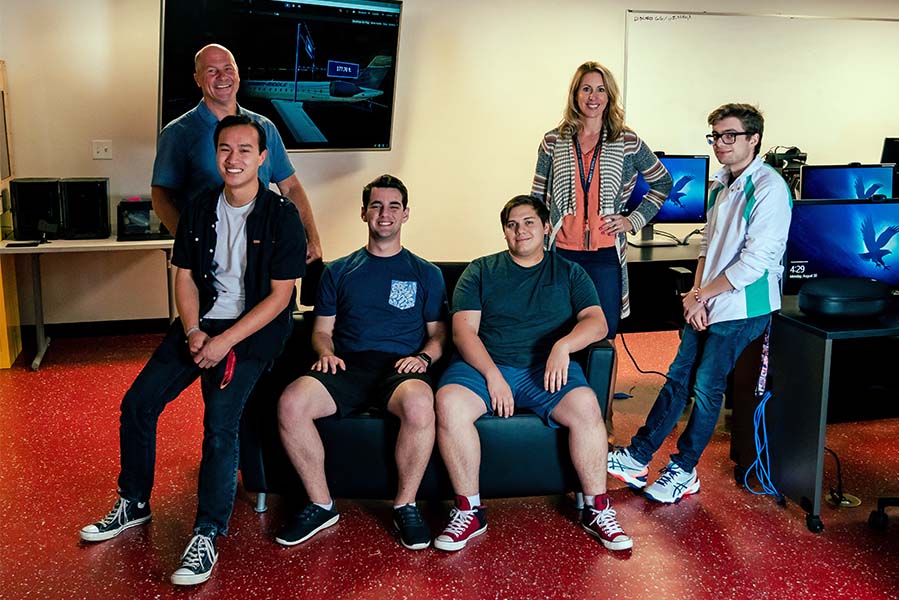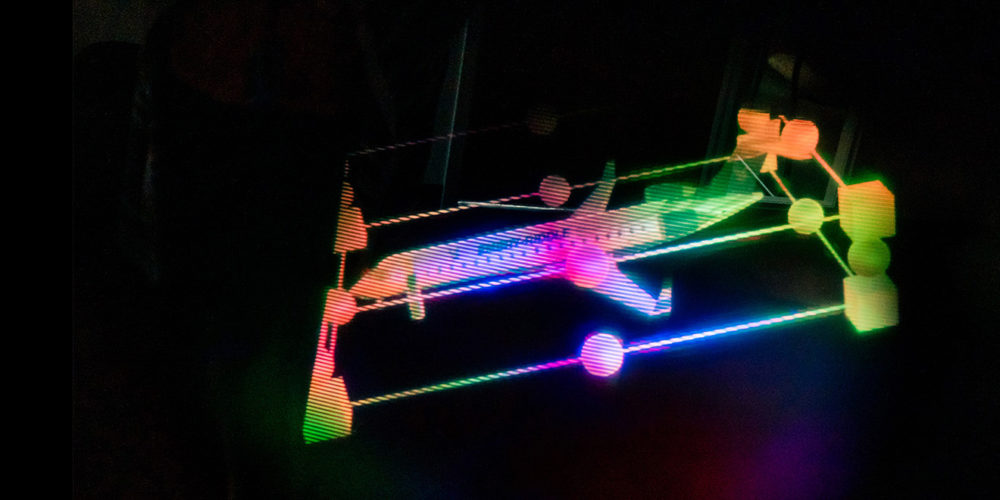A team of Simulation Science, Games and Animation (SSGA) students are developing augmented-reality (AR) holograms that will eventually play a part in training the next generation of aviators at Embry-Riddle.

The holograms developed by the SSGA team work like this: A student wearing the headset can step through “slides” inside interactive virtual training modules, allowing them to view schematics and information about the CRJ-700 aircraft in 3D. Another type of hologram model in development could let them look around the flight deck and manipulate the buttons, switches and controls as they would in real life. And additional holograms in the works depict the landing gear operation and the external fuel panel.
Next, the team plans to improve the software so that multiple users can interact with the same jet simulation simultaneously. After testing the new prototype, the group will seek funding to expand the program to a full-class experience.
“We are on the leading edge of this technology at Embry-Riddle — both for the pilot students, who are the end users, and the games and sims students, the developers,” says Michelle Hight, Ph.D., assistant professor of Aeronautical Science and Fixed Wing program chair. “This is really the future of pilot training. Imagine what this could do for distance learning.”
